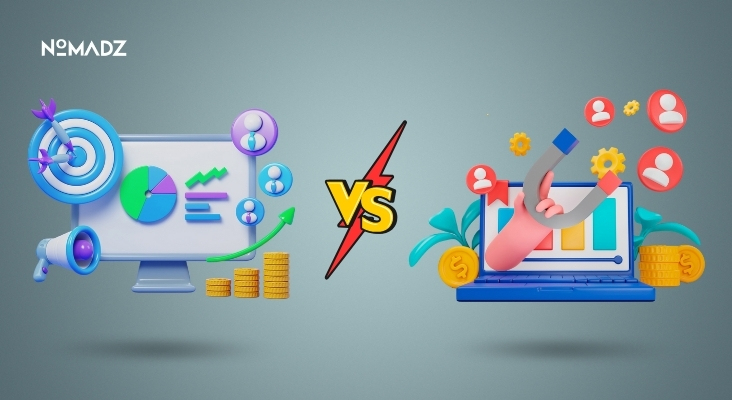Role of AI in Retargeting to Enhance Strategies
Personalization and precision have become the basis of successful advertising in the modern digital marketing environment that is rapidly changing. The practice of re-engaging with users who have already engaged with the brand has become an inseparable component of the performance marketing strategies: retargeting. However, when users use products in a more sophisticated way, conventional techniques of remarketing fail to work. It is here that AI in retargeting comes in, and the way brands perceive, interact, and turn their audiences into customers.
What is Retargeting and Why It Matters?
Retargeting is a marketing strategy that is aimed at reconnecting those users who have already been on your site or app, but failed to do something you want them to do, such as buy something, fill out a form, or subscribe. This would allow brands to reenroll these users into a conversion funnel by displaying personalized advertisements to them across platforms.
Nevertheless, the traditional model of retargeting used was based on fixed audience groups and generic advertisement material. It treated all visitors as equals, irrespective of their motives and actions. The result? Hypersaturation, unproductive advertising, and a drop in interaction. It is here that AI in retargeting totally transforms the game to be smarter and more data-driven.
How AI is Revolutionizing Retargeting Strategies?
Intelligence and flexibility in campaigns are introduced by AI in retargeting. Rather than just using cookies or manual segmentation, AI computes massive amounts of behavioral data on a real-time basis. It examines the interactions of users with websites, what they watch, their duration on the sites, and where they fall short, thereby establishing an in-depth profile of their intentions.
That is how AI can be used to take retargeting to the next level:
The Smartest Targeting Projections.
AI is not a reactionary system, but a prediction system. Through historical and behavioral data, AI models can be used to predict the users most likely to convert. This predictive layer makes the brands spend their advertising money more efficiently and on high-intent audiences instead of retargeting everybody.
Dynamical Audience Segmentation.
The conventional type of segmentation is strict. On the other hand, AI continuously changes the lists of audience lists, depending on real-time activity. A customer who watched a product yesterday and put it in the shopping cart today will be automatically redirected to a different segment with more appropriate messages. Such accuracy makes advertisements current and effective.
Also Read: Email Marketing Campaigns: Tool for Successful Marketing
Maximized Ad Frequency and Timing.
The right balance between being noticeable and being obtrusive is one of the biggest problems of remarketing. The exposure of AI algorithms to user engagement patterns is to understand the best ad frequency and timing so that your brand is visible at the time when users are most open to it.
Personalized Ad Delivery at Scale
AI does not simply assist in making the target choice, but it also streamlines the method of targeting. By offering personalized delivery of ads, AI systems have the capability of generating various variations of adverts depending on the behavior of users, their interests, and their buying history. As an example, a user browsing running shoes may see an offer on their preferred model, whereas a second one may be reminded about another comparable product the user had looked at.
This form of personalization adaptation was previously unavailable on a large scale. Today, AI in retargeting allows marketers to create hyper-relevant creatives in channels such as display, social media, and email, and in real time. This strategy not only boosts the number of clicks through, but when done correctly, this strategy can create a stronger brand recall and trust.
Enhancing Remarketing Techniques with AI
On the one hand, AI is changing the conventional remarketing strategies by automating and streamlining the processes that previously were manual. With machine learning models, campaign data can instantly be analyzed, and bidding strategies, creative formats, and audience segments can be changed to improve performance in real-time.
For example:
- Lookalike Modeling: AI can find new potential customers who are similar to your most successful audience groups.
- Dynamic Creative Optimization (DCO): AI is able to test a variety of ad variations and then automatically provides the most effective ones.
- Cross-Device Tracking: AI makes sure that user experiences are continued across devices, i.e., in case someone browses your site using mobile and makes a purchase on a desktop, the communication stays the same.
All of these methods assist the marketers in surpassing the one-size-fits-all approach and transitioning to real-time flexibility.
The Role of AI-Driven Advertising
The move to AI-focused advertising is redefining the way a brand goes about data, creativity, and interaction with audiences. As privacy rules change and third-party cookies expire, AI-powered technology is dependent on environmental indicators and initial data. This enables the advertisers to be precise without violating privacy.
AI not only enhances retargeting by being more efficient, but it also makes it smarter. It makes every impression count; every advertisement is context-specific. Also, each campaign is constantly refined on the basis of the real-world performance information.
Why Marketers Should Embrace AI in Retargeting?
The benefits of AI-based retargeting are evident. This approach will boost conversion rates, decrease ad spend waste, enhance the user experience, and increase brand-customer relationships. It allows marketers to shift towards a proactive approach. Instead of reactive strategies, where the campaigns become dynamic and depend on consumer intent and not assumptions.
The brands that shine in a digital world that is full of advertisements are the ones that know their customers. And insight is a product of smart data processing – AI is more adept at it than any other manual system ever was.
Also Read: Dynamic Retargeting: Boosting Conversions with Personalized Ads
Conclusion
Since consumer journeys become more fragmented and attention is focused on a reduced time, retargeting precision is required. Artificial intelligence with the purpose of retargeting is not only a marketing booster. But also a business requirement of every brand that is concerned about remaining relevant and competitive.
Through a blend of information, forecasting, and customization. AI helps in making sure that remarketing initiatives are directed to the right individuals and they also appeal to them in significant ways.
The intelligent, efficient, and highly personalized future of retargeting lies in the smooth combination of AI, creativity, and strategy.








Leave feedback about this